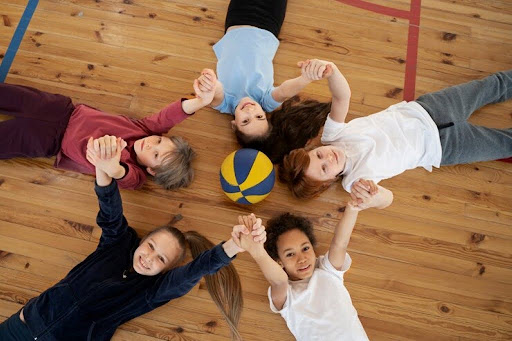
Junior volleyball classes offer a dynamic and engaging environment for young athletes to develop their skills, foster teamwork, and embrace the spirit of the game.
These classes are designed to cater to varying skill levels and age groups, providing a structured approach to volleyball training.
In this article, we’ll delve into what junior volleyball classes entail, including the skill levels addressed, age groups involved, and typical training activities conducted.
Skill Levels
Volleyball classes typically accommodate a wide range of skill levels, from absolute beginners to intermediate and advanced players.
Coaches recognize that each participant may have different levels of experience and proficiency in fundamental volleyball skills such as serving, passing, setting, hitting, and blocking.
As a result, junior volleyball classes are often organized to ensure that each player receives appropriate instruction and challenges tailored to their skill level.
Beginners focus on mastering the basics, while more advanced players work on refining techniques and strategies to elevate their game.
Age Groups
Junior volleyball classes are structured to accommodate children and teenagers within specific age ranges. Age groups may vary depending on the organization or club offering the classes, but common divisions include:
- Mini Volleyball (Under 10): Introduces the fundamentals of volleyball in a fun and engaging manner, focusing on basic skills and motor development.
- Pre-Teen (10-12 years): Builds upon fundamental skills while introducing more advanced techniques and game concepts in a supportive and encouraging environment.
- Teen (13-18 years): Provides comprehensive training geared towards preparing players for competitive play at the high school level and beyond, emphasizing skill refinement, tactical awareness, and physical conditioning.
Typical Training Activities
Junior volleyball classes incorporate a variety of training activities designed to develop specific skills, enhance teamwork, and simulate game situations. Some typical training activities include:
- Skill Drills: Players engage in drills targeting key aspects of the game, such as serving accuracy, passing consistency, setting precision, hitting technique, and blocking timing.
- Game Simulations: Coaches organize controlled scrimmage matches or game simulations to allow players to apply learned skills in a competitive setting while emphasizing teamwork, communication, and strategic decision-making.
- Physical Conditioning: Conditioning exercises such as agility drills, footwork drills, strength training, and endurance exercises are integrated into the training regimen to improve overall athleticism and reduce the risk of injuries.
- Video Analysis: In some advanced programs, coaches may utilize video analysis tools to provide feedback and insights into player performance, allowing for targeted improvement in technique and decision-making.
- Mental Skills Training: Players are introduced to mental skills training techniques such as visualization, goal setting, focus strategies, and overcoming performance anxiety to enhance their mental toughness and resilience on the court.
Conclusion
Junior volleyball classes play a crucial role in nurturing the next generation of volleyball players by providing a structured and supportive environment for skill development and growth. By catering to various skill levels, age groups, and employing diverse training activities, these classes not only help players improve their volleyball skills but also instill values such as teamwork, discipline, and sportsmanship.


